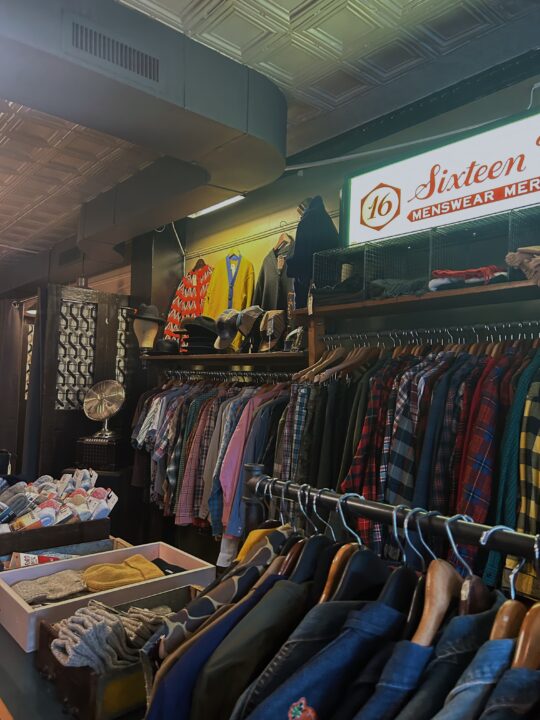The convergence of incoming stimulus checks, tax returns, the changing seasons and the possible lifting of activity and travel restrictions over the next several months is likely to induce a behavior that many college students might have abandoned for the past year of sweatpants: buying new clothes.
Personal consumption expenditure data indicates that Americans spent $368.021 billion on apparel in 2020 — a $51.964 billion, or 12.3 percent decrease from the previous year. If the economy continues to improve, logic suggests that, indeed, University of Maryland, Baltimore County students will return to purchasing formal wear for presentations (and, yes, probably more sweatpants) with plans for an increase in on-campus classes in the fall.
The vast majority of students do not have unlimited clothing budgets, but internet access provides a great deal of material to research. Many seemingly economical options are available online, but if a deal on new clothing seems too good to be true, it probably is. The term “fast fashion” has quickly entered the national, and international, lexicon, and now internet-savvy college students have varying levels of awareness of concepts like “slow fashion” as well as “sustainable” and “ethical” clothing.
But navigating the alphabet soup of terminology, certifications and vague acronyms can be daunting. After all, time is money, especially for students who might have difficult schedules on top of work. It can even be a challenge to know which guide to reference after a Google search. And the slew of patronizing and shaming content does more harm than good in encouraging people to start taking action in an unfamiliar field.
The first important difference to understand is between “sustainable” and “ethical” fashion. One of the most accessible definitions of sustainability comes from the UN: “meeting the needs of the present without compromising the ability of future generations to meet their own needs.” In the clothing industry, this usually applies to resources and the environment: clothing requires resources, but sustainable practices will take them from the environment such that they, and the land from which they come, continues to thrive for the future.
Ethicality relating to fashion, on the other hand, generally coincides with clothing production that does not harm the people involved, such as agricultural workers and seamstresses. The branch of ethics in general means that ethical production should abide by the morals of both people and the environment, just as sustainability involves protecting people, but in practice, ethical fashion is more commonly the term associated with human rights.
Thus, in terms of environmental sustainability, the best practice is to not purchase clothing at all. But in addition to being unrealistic, as fabric and other materials eventually wear out, this is not always the most ethical option. If no one bought new clothing, even the industry workers who have safe working conditions and get paid a living wage would suffer from lack of work.
The main problem, then, with the fashion industry — as fast fashion does absolutely harm the environment (and it emits a shocking 10 percent of global carbon) and industry workers — is not simply that it produces clothing, but that many companies get away with the terrible practices of waste, pollution, creating harmful working conditions and not paying their workers the living wage that they deserve.
That is not to say that individual consumers bear the brunt of responsibility; a frustrating part of the issue is that it is difficult to pinpoint culpability on people, though the corporations at fault certainly want consumers to take the blame. Rather, consumers should feel empowered to vote with their dollar, so to speak, by choosing to support only sustainable and ethical practices.
Again, even this realization circles back to the issue of figuring out which options are genuinely good. One tip to assessing a brand is to pay close attention to the way it markets its sustainable and ethical efforts. Common certifications like Fair Trade can be helpful starting points, but be wary of vague language and acronyms: research these references to make sure that the brand is not just assessing itself internally (this is a sign, especially for large companies, that it would not pass more objective measures). If a brand’s website cites data about its production, follow up on it with more research: did it conduct its own investigation, or did a reputable external organization do it?
Another way to shop more sustainably and ethically, that generally requires less extensive research and can be much cheaper, is to shop secondhand. Thrift shopping has exploded in popularity, especially becoming a trend among younger consumers.
It is important to note that there are ethical concerns involved, namely that individuals are treating thrift stores like their suppliers by buying and then reselling items for their own profit, which takes away quality pieces from people who cannot afford the markups. Thus, consumers should come to their own conclusions about whether it is ethical for them to thrift shop — but a general rule is that if one is buying clothing that one needs for personal wear, and especially if one is completing the cycle by donating or consigning one’s own used clothing so that others can use it, it is.
In addition to traditional in-person thrift shopping (guides such as this one are available for local stores), online secondhand stores, such as the popular site thredUP, exist. There is an ongoing debate about whether online shopping in general is more or less sustainable than in-person shopping, but it might be the only safe and responsible option right now. Additionally, choosing slower shipping options and avoiding impulse purchases (to prevent returning items, as this increases the environmental impact) are good practices.
UMBC junior INDS: Sustainable Design major Megan O’Neill shared some tips on textiles in an email comment to The Retriever, noting that consumers can make smarter buying choices by familiarizing themselves with fabrics, such as using the “light test” (if a lot of light passes through a fabric, it is probably loosely woven and will not last as long as a tighter weave) and that, in general, if a clothing item is missing information about its composite materials (usually found on a tag), it is probably low-quality and non-sustainable.
The main takeaway for the current state of fashion consumption is to do the best that is possible. Taking the time to do extensive research is ideal, but not plausible for all people, especially in a short period of time with the complicated and often conflicting information available online. The best practice is to keep an open but critical mind as a consumer: trust environmental and ethics organizations to provide good information instead of relying on fashion companies to hold themselves accountable.


